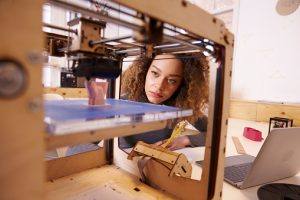 The heart is one of the most important organs in our body. It is essentially a giant pump, and for every minute your heart pumps, it goes through about five quarts of blood. Over the course of a day, your heart pumps around 2,000 gallons of blood.
The heart is one of the most important organs in our body. It is essentially a giant pump, and for every minute your heart pumps, it goes through about five quarts of blood. Over the course of a day, your heart pumps around 2,000 gallons of blood.
Important of heart structures
The heart is required to be in tip-top shape to do its job adequately, but unfortunately, there are times when the heart fails, leading to poor circulation and decreased blood supply to the rest of the body.
Advertisement
Once such condition affecting the heart is heart valve disease. Patients with serious forms of the condition often undergo heart valve replacement. However, a problem with this type of surgery is the risk of paravalvular leakage—an extremely important indicator of how well a patient will do long-term with their new valve.
Valve replacement is commonly done using mechanical valves composed of durable metals and plastics, or using biological valves made from animal tissue such as an actual pig or bovine valve. Valves may also come from human donors or tissue from the patient themselves.
The anatomy of the heart consists of blood chambers and blood valves. Valves control the flow of blood by moving it one direction through the different chambers. If the valves aren’t working correctly, blood may leak between the chambers or flow backward. This is known as valve regurgitation, insufficiency, or incompetence.
Using new technology to improve treatment
Researchers from Georgia Institute of Technology and the Piedmont Heart Institute believe they have come up with a more efficient solution for aiding heart valve replacement surgery, and it is using 3D print technology.
“These 3-D printed valves have the potential to make a huge impact on patient care going forward,” said Chuck Zhang, a professor in the Stewart School of Industrial and Systems Engineering at Georgia Tech.
3D printing is a relatively new technology that allows users to make fully-modeled 3D objects that can be held in your hands. The medical community has been exploring the best ways to implement this new technology.
A huge benefit of creating custom tailored heart valves is having the ability to test the prosthetic valve and predict whether leakage will be an issue. Leakage occurs when the new valve doesn’t fit precisely and blood flows around the prosthetic rather than through it.
Advertisement
“In preparing to conduct a valve replacement, interventional cardiologists already weigh a variety of clinical risk predictors, but our 3-D printed model gives us a quantitative method to evaluate how well a prosthetic valve fits the patient,” said Zhen Qian, Chief of Cardiovascular Imaging Research at Piedmont Heart Institute.
Getting the best fit possible
Studies testing this new method have already shown promising results. It allows for the best prosthetic valve fit a patient could possibly receive.
The researchers plan on perfecting the materials used for their 3D models as well as developing ways to optimize the 3D printing process. A larger patient-specific model study is expected to be carried out to further refine analytic tools.
